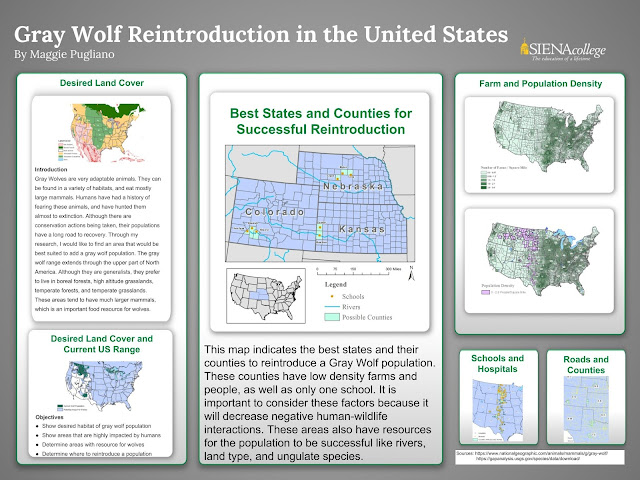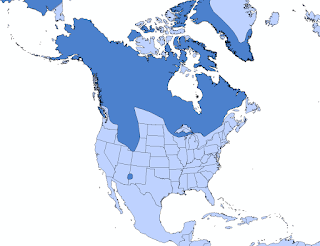I have made a lot of progress on my maps. I have found the farm and population density for each county. By those numbers, I have chosen states that seem good to place a gray wolf population. This map shows farm density in each county, and the counties with less than 2.9 people per square mile. I picked these categories because I would want the wolf population to be as successful as possible. Many farm owners have negative feelings towards wolves because they prey on their farm animals. I would want to place the population in an area with little to no farms to prevent any issues. The lighter green areas are areas with less farms per square mile, and the darker green have more farms per square mile. The purple areas are counties with less than 2.9 people per square mile, as well as a low farm density. So far, the purple areas are counties I would consider placing the wolf population. These counties can be found in CA, CO, ID, KS, MI, MN, MT, NB, NM, ND, OK, OR, SD, TX, and WY. T...




